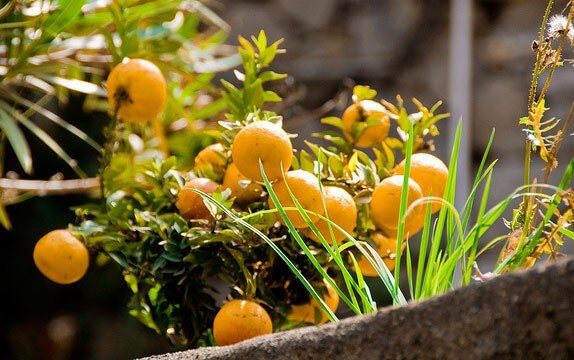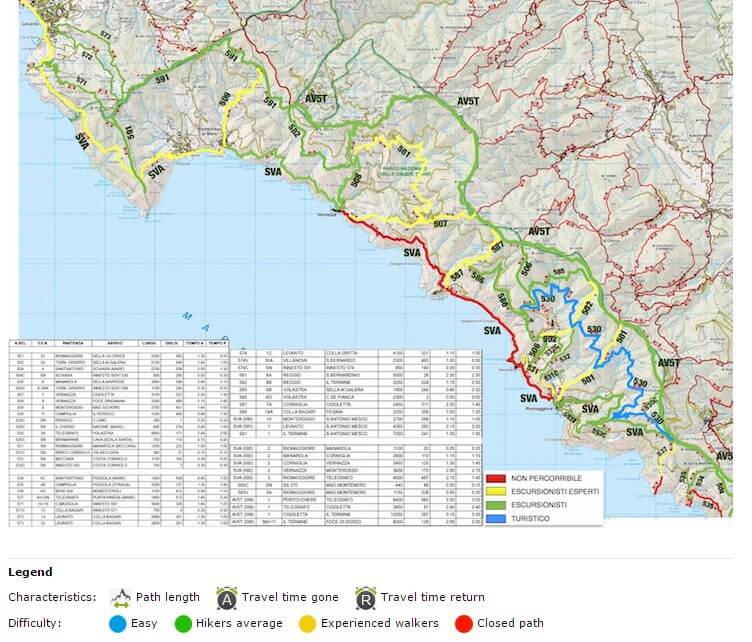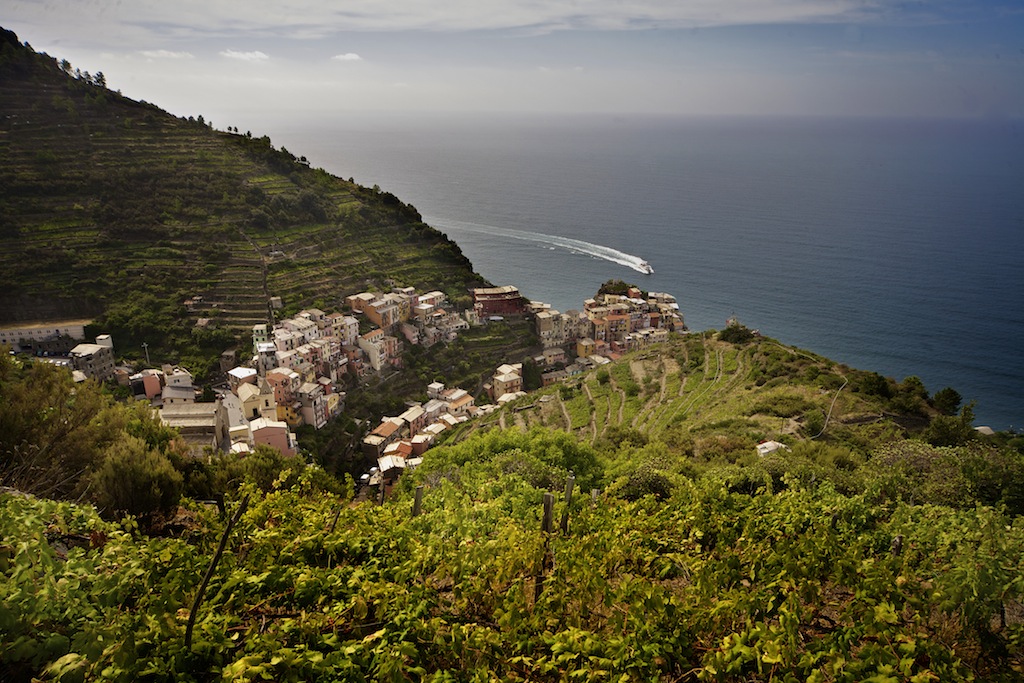Today we will be exploring the beautiful Cinque Terre National Park. With its 3,860 hectares, it covers the five villages of Riomaggiore, Manarola, Corniglia, Vernazza and Monterosso al Mare. It is next to the Regional Nature Park of Porto Venere.
A man-made landscape
The landscape of the Cinque Terre has an unmistakable aspect shaped by man. In fact, for over a thousand years, local inhabitants have “changed” the natural territory by shaping the steep hill slopes to obtain strips of arable land. These terraced strips are called “ciàn” in the local dialect, and are supported by about seven thousand miles of dry stone walls!
The natural richness and the unusual man-made landscape have led the Cinque Terre National Park to be included in UNESCO’s list of World Heritage Sites with the following justification:
The Committee decided to inscribe this site […] considering that the eastern Ligurian Riviera between Cinque Terre and Portovenere is a cultural site of outstanding value, representing the harmonious interaction between people and nature to produce a landscape of exceptional scenic quality that illustrates a traditional way of life that has existed for a thousand years and continues to play an important socio-economic role in the life of the community.
This National Park is unique in the fact that, while other parks are created with the intention of taking the natural environment away from everyday human action, the objective in the Cinque Terre is to bring people to act on the landscape by cultivating and taking care of it with traditional methods. In fact, with the rise of the industrial society, local agricultural activity was abandoned and the landscape suffered the consequent degradation.
Local products
The creation of the national park in 1999 and the subsequent programs that were enacted for the sustainable development of the area have revived ancient traditions and a return to agricultural practices.
Wine
The thousand-year-old tradition of wine production has been relaunched with good results, although the approximately 100 hectares of vineyards are not comparable to the 1,400 hectares cultivated one hundred years ago. What makes things particularly difficult is the peculiar geo-morphological conformation of the Cinque Terre region, which discourages the allocation of energy and resources. Furthermore, mechanized farming is impossible: rack monorails are the only types of machinery that can be used.
Among local viticultural products, the Sciacchetrà deserves a special mention: this straw and liqueur-like wine is produced in the Cinque Terre from the Bosco, Albarola and Vermentino vine varieties. Following the harvest, the grapes are left to dry under the sun until November and are then hand selected. Sciacchetrà is a niche product that can age for ten, twenty, or even thirty years. Italian poets and authors Plinio, Boccaccio, Petrarca, Carducci and d’Annunzio loved and wrote about this wine. Its excellent quality is today granted by the DOC denomination.
Anchovies of Monterosso
A Cinque Terre traditional dish, they are processed according to the old Monterosso recipe. Known as “pan du maa” (bread of the sea), anchovies are caught with a traditional seine net and fishing lamp, and then hand-processed within two or three days. Anchovies are carefully stratified in jars, pressed and covered with brine. The product maintains the smell and taste of fresh fish. Anchovies can be enjoyed with oil, oregano and garlic as a delicious starter, or even as the main course.

Lemons
Lemons have been grown in the Cinque Terre since the XVII Century thanks to the favorable climate that allows cultivation without the use of chemicals. The “gold of the Cinque Terre” is used for marmalade, biscuits, tarts, cakes and limoncino.
Honey
Different types of honey are produced from the rich vegetation of the Cinque Terre, such as acacia, chestnut and Mediterranean scrub.
Flora & Fauna
The vegetation is characterized mainly by pines, Aleppo pines, corks and chestnuts. Rock and coastal environments produce numerous Mediterranean species, such as samphire and sea cineraria. Flora is visible everywhere, even as shrub rosemary, thyme, helichrysum and lavender.
Moving on to the fauna, among the birds are the gull, the peregrine falcon and the raven. Among the mammals are the dormouse, weasel, mole, badger, marten, fox and wild boar. The reptiles that thrive in the rock are different types of lizards and some snakes.
Park trails
There are a number of trekking paths that allow you to explore the Cinque Terre National Park and the villages within it. Some hiking paths connect Cinque Terre with Portovenere. Always remember that the journey on these paths has to take place in good weather conditions, with appropriate footwear and preferably by people with good hiking practice.
Have a look at the park’s official website for an updated map and descriptions of all hiking paths.

When visiting the Cinque Terre National Park, you will understand how this outstanding, peaceful nature is not “natural” in the literal sense of the word, but how the surrounding landscape is the result and witness of hard work and desperate efforts by the locals who had to adapt and survive in the past centuries – not only in terms of landscape but culture, culinary traditions and customs.
For more on eco-tourism in Liguria, read our articles on the Protected Marine Area of the Regional Natural Park of Porto Venere and on the Regional Nature Park of Porto Venere.
Sources:
Main image by Justin (jp3g on Flickr)


4 Comments